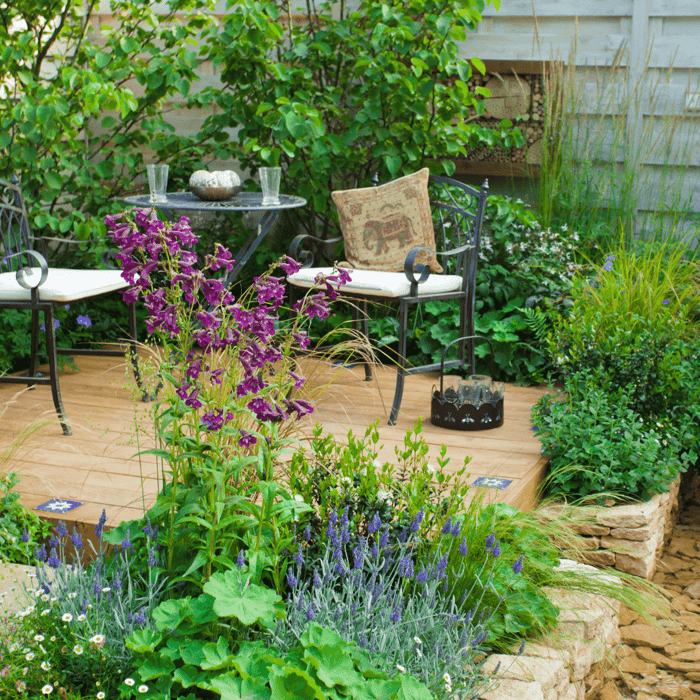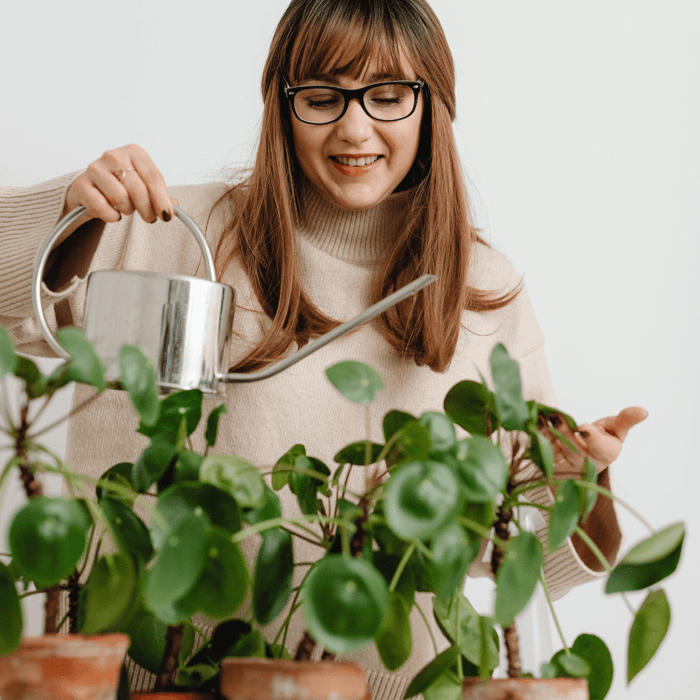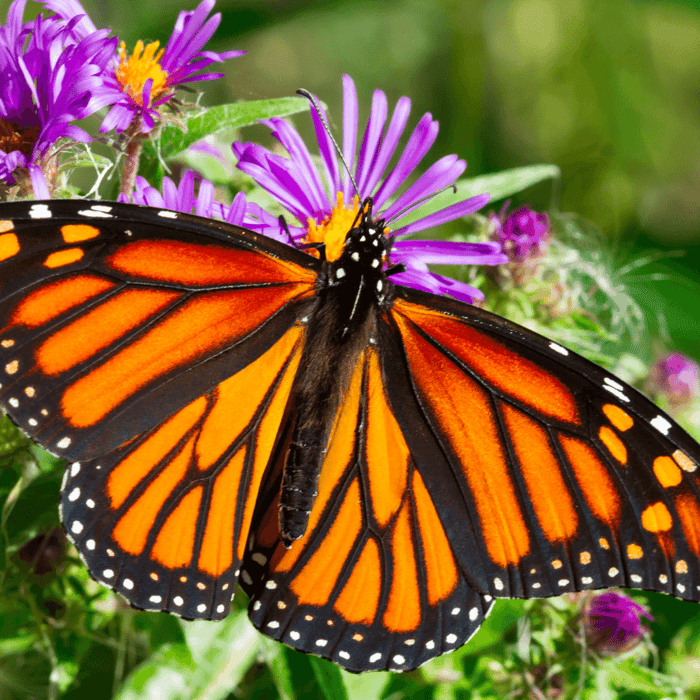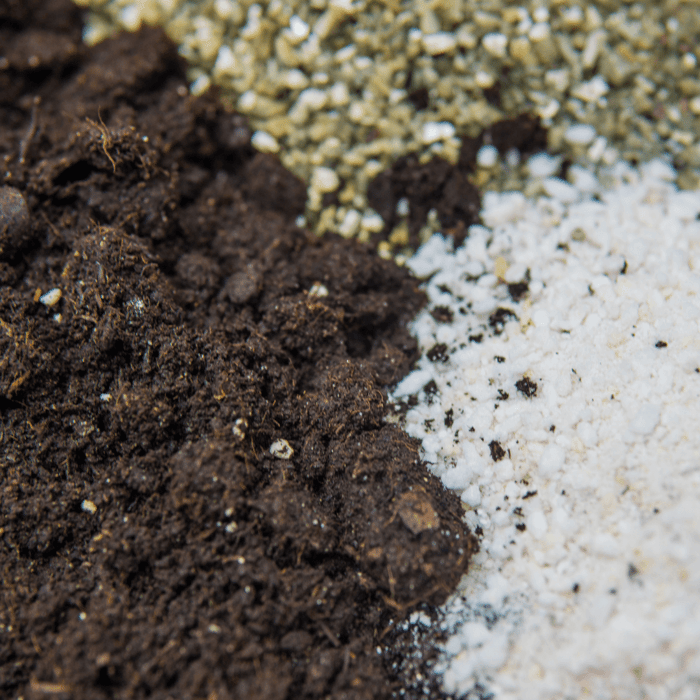A thriving patio garden can be the perfect addition to your outdoor living space, but it's not always easy to get it right. Many common patio garden mistakes can prevent your garden from reaching its full potential. This step-by-step guide will discuss 10 common mistakes to avoid, ensuring your patio garden is beautiful and productive.
Not Choosing the Right Type of Plants
Ignoring Mature Sizes
One of the most common patio gardening mistakes is not considering the mature sizes of your chosen plants. It's essential to select plants that won't outgrow their containers or crowd your patio. Overlooking the mature sizes of plants can lead to overcrowding, resulting in competition for resources and a less attractive garden.
- Research the mature sizes of your desired plants before purchasing
- Choose plants with similar mature sizes to create a cohesive, well-proportioned garden
- Consider plants with a compact or dwarf habit for small spaces
Buying Warm Weather Plants Too Early
Purchasing warm-weather plants too early in the season is another common mistake. These plants will struggle if exposed to cold temperatures, potentially stunting their growth or causing them to die. In some cases, this can also make them more susceptible to pests and diseases.
- Wait until the risk of frost has passed before purchasing warm-weather plants.
- Choose cold-hardy plants if you want to start your garden earlier in the season.
- Monitor the weather forecast and gradually acclimate your plants to outdoor conditions.
Using the Wrong Garden Soil
Many gardeners make the mistake of using regular garden soil for their patio containers. This can lead to poor plant growth and other issues, as garden soil may not provide the right combination of nutrients, water retention, and drainage for container plants.
- Use high-quality potting soil instead of garden soil for container plants
- Ensure the potting soil is well-draining and provides the necessary nutrients for plant growth
- Refresh or replace the potting soil in your containers every couple of years to maintain optimal growing conditions
Overcrowding Plants
Overcrowding container plants can hinder their growth and lead to various problems, including pests and diseases. This is because overcrowded plants compete for resources such as water, nutrients, and light, resulting in stress that can weaken the plants and make them more susceptible to issues.
- Give each plant enough space to grow according to its mature size
- Don't be tempted to add too many plants to a single container
- Regularly prune and maintain your plants to keep them healthy and avoid overcrowding
 Insufficient Watering and Irrigation
Insufficient Watering and Irrigation
Not Providing Enough Water
Underwatering is a common patio gardening mistake that can lead to stunted growth or even plant death. Inadequate watering can cause plants to become stressed, making them more vulnerable to pests and diseases.
- Water your plants regularly, ensuring the soil remains consistently moist
- Use a drip irrigation system to automate watering and reduce the risk of underwatering
- Adjust your watering schedule based on the weather and the specific needs of your plants
Not Using a Plant Saucer - Stains Ground
Failing to use plant saucers can result in water stains on your patio, which are unsightly and can be difficult to remove. Additionally, plant saucers can help prevent root rot by preventing the plants from sitting in standing water.
- Place saucers beneath your containers to catch excess water and prevent staining.
- Empty saucers regularly to avoid creating a breeding ground for pests like mosquitoes
- Choose saucers that match the size and style of your containers for a cohesive and attractive appearance.
Inadequate Light Conditions
Full Sun
Some plants require full sun to produce fruits and flowers, but many patio gardeners mistakenly place these plants in shady spots. Insufficient sunlight can lead to weak, leggy growth and reduced flowering or fruit production.
- Ensure your sun-loving plants receive at least 6 hours of direct sunlight daily.
- Consider relocating your containers if your patio doesn't receive enough sunlight.
- Rotate your containers periodically to ensure even exposure to sunlight for all plants.
Shade
Conversely, shade-loving plants can suffer if exposed to too much direct sunlight. This can cause scorching of the leaves, reduced vigor, and an overall decline in plant health.
- Place shade-loving plants in areas that receive filtered light or partial shade.
- Monitor your plants for signs of sunburn or stress, and adjust their location as needed.
- Use taller plants or structures to provide shade for more sensitive plants in your patio garden
Mixing Sun Loving and Shade Plants
Some nurseries, big box stores, and even home gardeners mix sun-loving and shade plants when making their patio gardens or hanging pots. This doesn't work out well because some plants will usually die as it is hard to make both types of plants happy. Before buying premade planters or making your own, research the types of plants going into them to ensure they are all sun-loving or shade plants, and place them in places that receive the proper light conditions.
Neglecting to Start Small - Patio Garden Mistakes
Starting with too many plants or large containers can overwhelm beginner gardeners. It's important to start small and gradually expand your patio garden. By doing so, you'll be able to better understand the needs of your plants and develop your gardening skills.
- Begin with a few containers and plants to learn about their specific needs
- Gradually add more containers and plant varieties as you become more comfortable with patio gardening
- Experiment with different plant combinations to discover what works best for your space and personal preferences
Failing to Monitor for Pests and Diseases
Patio gardens are not immune to pests and diseases, and neglecting to monitor for these issues can significantly damage your plants. Early detection and treatment are crucial for maintaining a healthy garden and minimizing the impact of these problems.
- Regularly inspect your plants for signs of pests or disease, such as discolored leaves or damaged foliage
- Treat any infestations or infections promptly to minimize damage and prevent the problem from spreading
- Use organic or chemical treatments as appropriate, and always follow the product instructions for safe and effective use
Improper Plant Selection at the Garden Center
Choosing Unhealthy Plants
Selecting unhealthy plants at the garden center is a common mistake that can lead to poor growth and disappointment. Unhealthy plants may struggle to establish themselves in your garden and can even introduce pests or diseases to your other plants.
- Examine plants carefully before purchasing, looking for signs of disease or pest infestations
- Avoid plants with yellowing leaves, wilted stems, or damaged roots
- Consult with garden center staff for advice on choosing healthy plants suitable for your specific needs and conditions
 Focusing on Mature Plants
Focusing on Mature Plants
Many gardeners are tempted to purchase mature plants, believing they will provide instant gratification. However, these plants can struggle to adapt to their new environment and may not grow as well as younger plants. Additionally, mature plants often come with a higher price tag, which may not be justified by their performance in your garden.
- Opt for younger, smaller plants that will have an easier time acclimating to your patio garden
- Be patient and allow your plants to grow and mature naturally, enjoying the process and rewards of nurturing them
- Consider starting plants from seeds or cuttings to gain a deeper understanding of their growth habits and requirements
Overlooking the Importance of Proper Drainage
Not Providing Adequate Drainage
Failing to provide adequate drainage in your containers can lead to root rot and other issues. Poor drainage can cause water to become trapped in the soil, depriving plant roots of the oxygen they need and promoting the growth of harmful pathogens.
- Ensure your containers have drainage holes at the bottom
- Add a layer of gravel, pebbles, or perlite to the bottom of your containers to improve drainage
- Avoid using saucers that are too deep, as this can hinder proper drainage and contribute to root rot
Not Elevating Containers
Elevating your containers can help improve drainage and prevent water pooling beneath them. This helps prevent issues like root rot and keeps your patio cleaner and drier.
- Use pot feet or other supports to raise your containers off the ground
- Ensure the supports are stable and can support the weight of your containers when filled with soil and water
- Experiment with different container elevations to find the best arrangement for your patio garden
Not Understanding the Specific Plant Needs to Thrive
Each plant has its unique set of requirements to thrive, and neglecting to address these needs can lead to poor growth or plant death. By understanding and catering to the specific needs of each plant variety in your patio garden, you can ensure a healthy and productive garden.
- Research the specific needs of each plant variety, such as sunlight, water, and nutrient requirements.
- Adjust your care routine to ensure each plant receives the proper care to thrive.
- Consider grouping plants with similar care requirements together for easier maintenance and a more cohesive garden design.
By avoiding these 10 common patio garden mistakes, you can create a beautiful and thriving patio garden that will bring you joy and satisfaction for years. Remember to research and understand the specific needs of your chosen plants, provide proper care, and monitor for pests and diseases to ensure a healthy and productive garden. With patience, planning, and dedication, your patio garden can become an inviting and cherished outdoor space for you and your loved ones.







